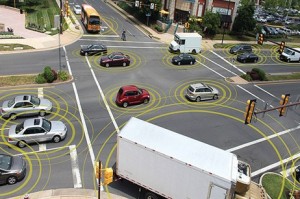In a recent post, “Fixing Transportation Takes More than Money,” I argued, among other things, that it is useless to forecast the need for future transportation capacity based on past trends. I neglected to mention one of the greatest game changers on the horizon: Intelligent vehicles.
The ability of cars (1) to sense one another and (2) to communicate with one another will make it entirely possible for cars to drive themselves. People will punch in their destination and the car will do the less. It sounds like a Buck Rogers pipe dream, but scientists insist that the technology is not merely coming — much of it is already here.
Driverless cars will render obsolete much of what we think we know about the economics of transportation. Among the benefits: Because smart cars will be able to drive much closer to one another than human-operated vehicles, they will effectively increase the carrying capacity of existing roads and highways. In a recent study, “Highway Capacity Benefits from Using Vehicle-to-Vehicle Communication and Sensors for Collision Avoidance,” researchers at Columbia University conclude that equipping all vehicles with sensors and intervehicular communications devices would increase the capacity of existing roads by 273%. (See Evan Ackerman’s summary of the research in the IEEE Spectrum blog.)
(If cars will be able to travel closer together, I presume that they also will be able to travel safety within narrower lanes. A very cool bonus not considered in Ackerman’s article is the potential to free up space for bicycle lanes. We could create a vast bicycle infrastructure for the cost of repainting the lines on streets.)
Ackerman concedes that the world is not yet ready for robot cars.
The government has no idea how to manage them, and manufacturers are understandably concerned about liability. Here, though, things have started to move a little bit, with first Nevada and now California passing legislation governing their testing and use. This isn’t going to be a fast transition, but when it happens, it’ll be one of the biggest transportation revolutions since the invention of, let’s say, walking.
Will Virginia be part of that revolution?
— JAB



